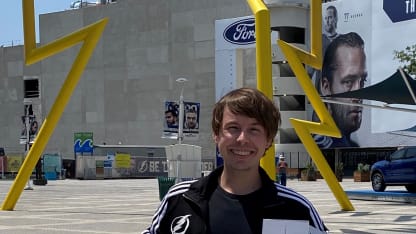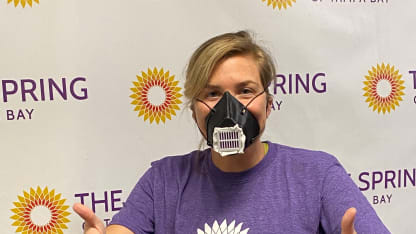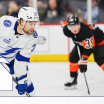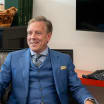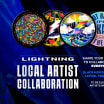Why wait a couple days for delivery of a camera lens cap when you can print one in a couple hours?
When the 3D printer arrived, it came disassembled
"I didn't realize it was a complete kit," he said. "There wasn't a single screw or nut that had been assembled on it at that point. I literally built the printer piece by piece, ran every wire, tested it, calibrated it and got the prints coming out of it."
The mechanically-inclined Huffman was intrigued by his creation.
"The second I got that thing working, I was like, 'Oh, this is awesome. I need something bigger and more powerful for myself at home.'"
Huffman purchased a 3D printer for his personal use and taught himself everything: designing, coding, best materials to use, top techniques, etc.
"I started doing a lot of research on it, got really into the community," Huffman said. "I joined online communities to help me troubleshoot online with them, a lot of good support there. I started building up my fleet. I realized this was a really good opportunity to turn into a business as well. It's a new, emerging technology and something I was able to grasp pretty easily."
Huffman started a side business, HuffCo 3D, creating custom pieces using his self-taught 3D printing acumen. One of his early, make-or-break assignments was for a baseball team locally who needed hard-shell enclosures to protect their high-speed cameras behind home plate and along the base lines.
The first day Huffman's finished product was put to use, a foul ball tipped straight back, the home plate camera taking a direct hit.
It survived unscathed.
"That was a good sign for HuffCo," Huffman said.
---
Huffman has plans for more personal protective equipment. He's doing test runs for ear savers, which take the pressure off the ear of the mask wearer, making the masks more comfortable to wear repeatedly for long stretches of time.
"They're like a little strap you can put your mask's elastic on to, and it takes the pressure off your ears that way," he said. "A lot of hospitals are requesting them."
And he continues to pump out more masks, his 3D printers whirring well into the night.
"Just trying to help out the community," he said.
